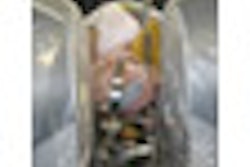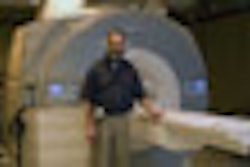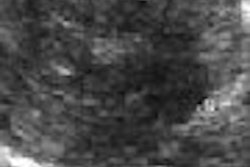Breast MRI has been gaining clinical interest of late, with its high sensitivity rate of 86% to 100% for detecting breast cancer. But there can be overlap in the MRI findings of enhancing breast lesions, which makes patient treatment decisions difficult without biopsy. And because other imaging techniques don't always find the breast lesions MRI does, it makes sense to perform the biopsy guided by MRI.
Researchers at the Hospital of the University of Pennsylvania in Philadelphia investigated the outcome of MRI-guided breast biopsy as a function of the indication for MRI and the MRI features of the lesions. Dr. Boo-Kyung Han and colleagues published their findings in the American Journal of Roentgenology (December 2008, Vol. 191:6, pp. 1798-1804).
The researchers included 154 women with 172 MRI-detected breast lesions who had received MRI-guided vacuum-assisted breast biopsy in 2005. Original MRI scans for all but 50 of the women who received the exams at another institution were performed with a 1.5-tesla system (Signa, GE Healthcare, Chalfont St. Giles, U.K., or Symphony, Siemens Healthcare, Malvern, PA).
The biopsies were performed using a dedicated breast compression coil fitted with a sterile perforated plate and two reference markers containing copper sulfate and a 9- or 10-gauge vacuum-assisted needle and biopsy system (ATEC, Suros Surgical Systems, a subsidiary of Hologic, Bedford, MA, or Vacora, C. R. Bard, Murray Hill, NJ).
Biopsy was deferred in 20 women with 22 lesions but was used in 134 women with 150 lesions. Of these 150 lesions, 39 (26%) were malignant, 90 (60%) were benign, and 21 (14%) were high-risk lesions, four of which were upgraded to malignancies after surgery or other follow-up.
For the 43 malignant lesions, Han's team found that 17 (40%) were in situ carcinoma and 26 (60%) were invasive cancer, bringing the overall probability of malignancy for an MRI abnormality to 29%.
The group also discovered that the positive biopsy rate of MRI-guided vacuum-assisted biopsy varied in different clinical settings. The cancer rate in the diagnostic setting was 36%, higher than the 14% in the screening setting.
"Although the morphologic pattern of a focus, a smooth mass, or a nonmass and the kinetic pattern of persistent enhancement showed a lower cancer rate than a nonsmooth mass and plateau or washout enhancement kinetics, the cancer rate wasn't significantly different according to the MRI features of the lesions," the team wrote.
By Kate Madden Yee
AuntMinnie.com staff writer
December 5, 2008
Related Reading
Presence of invasive cancer may cause MR-guided biopsy to miss DCIS, August 16, 2007
MRI may aid diagnosis of ductal carcinoma in situ, August 10, 2007
MRI beats US for breast screening of at-risk women, but yields more biopsies, August 6, 2007
Spring-loaded biopsy poses potential hazard of artificial tumor spread, December 27, 2006
Copyright © 2008 AuntMinnie.com
MRI findings of 150 targeted lesions and the probability of malignancy
| ||||||||||||||||||||||||||||||||||||||||||||||||||||||
| Persistent | 66/150 (44) | 15/66 (23) | ||||||||||||||||||||||||||||||||||||||||||||||||||||
| Plateau | 36/150 (24) | 11/36 (31) | ||||||||||||||||||||||||||||||||||||||||||||||||||||
| Washout | 17/150 (11) | 5/17 (29) | ||||||||||||||||||||||||||||||||||||||||||||||||||||
| Undescribed | 31/150 (21) | 12/31 (39) | ||||||||||||||||||||||||||||||||||||||||||||||||||||
| Total | 150/150 (100) | 43/150 (29) | ||||||||||||||||||||||||||||||||||||||||||||||||||||
|
a Size, 4-5 mm; mean, 4.9 mm. b Size, 6-32 mm; mean, 12.7 mm. c Size, 6-70 mm; mean, 22.4 mm. Courtesy of the American Roentgen Ray Society. |
||||||||||||||||||||||||||||||||||||||||||||||||||||||



















